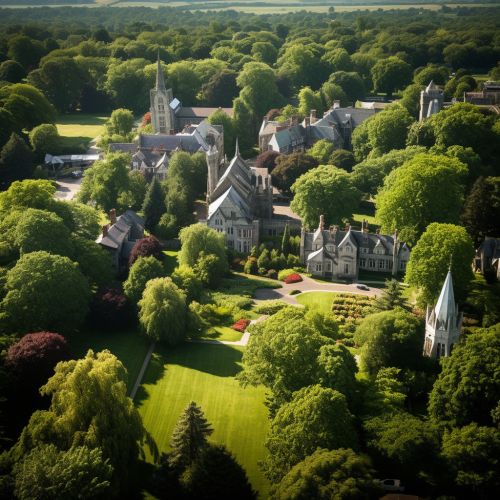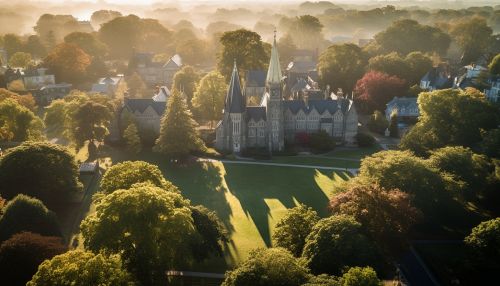Swarthmore College
History
Swarthmore College was founded by a group of Quaker abolitionists in 1864. The college was named after Swarthmoor Hall, a historic house in the United Kingdom associated with the emergence of the Religious Society of Friends (Quakers). The founders envisioned Swarthmore as a college "under the care of Friends, at which an education may be obtained equal to that of the best institutions of learning in our country."


The college admitted its first class of students in 1871, and it was one of the earliest coeducational colleges in the United States. Swarthmore was also one of the first American colleges to have a Phi Beta Kappa chapter, and the first to have a chapter of Sigma Xi, a scientific research society.
Campus
The Swarthmore College campus spans 425 acres and includes a designated arboretum, the Scott Arboretum, which features a collection of over 4,000 different types of plants. The campus buildings, a mix of Collegiate Gothic and modern architectural styles, are integrated into the natural landscape.
The campus is home to the Lang Performing Arts Center, the Science Center, McCabe Library, and the Parrish Hall, which is the oldest building on campus. The college also has several residential halls for students, including Alice Paul Hall, named after the famous women's rights activist Alice Paul.
Academics
Swarthmore College offers a liberal arts education and has more than 40 courses of study. The college follows a 4-1-4 academic calendar, with two four-month semesters and a one-month term in January. The college is known for its rigorous academic standards and its commitment to intellectual exploration and curiosity.
Swarthmore is part of the Tri-College Consortium with Bryn Mawr and Haverford Colleges, which allows students to cross-register for courses at any of the three institutions. The college is also a member of the Quaker Consortium, which includes the University of Pennsylvania.
The college's Honors Program, inspired by the tutorial system at the University of Oxford and the University of Cambridge, is a defining feature of its academic program. Students in the Honors Program take specialized seminars and prepare for oral and written examinations conducted by external examiners.
Student Life
Swarthmore College has a vibrant student life with over 100 student-run clubs and organizations. The college has a strong tradition of student governance and activism. The Student Government Organization (SGO) is the main body representing student interests.
The college is a member of the Centennial Conference for athletics. Swarthmore's teams, known as the Garnet, participate in NCAA Division III sports. The college does not have a football team, a decision made by the administration in 2000 to focus on academics.
Swarthmore is also known for its unique traditions, such as the Crum Regatta, a race of homemade boats on the Crum Creek, and the Pterodactyl Hunt, a campus-wide game of tag.
Notable Alumni
Swarthmore College has produced many notable alumni in various fields. These include five Nobel laureates, numerous Rhodes Scholars and Fulbright Scholars, and leaders in academia, business, arts, and public service.
